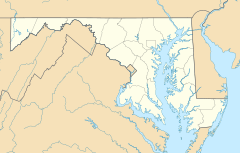Lyttonsville facts for kids
Quick facts for kids
Lyttonsville
|
|
|---|---|
|
Neighborhood
|
|
| Country | |
| State | |
| County | |
| Unincorporated community | Silver Spring |
| ZIP Code |
20910
|
| Area codes | 301, 240 |
Lyttonsville is a neighborhood in Silver Spring, Maryland. It is mostly made up of homes. This area started in the 1850s. It is one of the oldest neighborhoods in Montgomery County. Lyttonsville is special because it was created by free African Americans before the Civil War. Today, Lyttonsville covers about 68 acres. It has many small single-family homes.
Contents
Where is Lyttonsville?
Lyttonsville is part of the Silver Spring area. To the south, it borders East-West Highway. Beyond that road are the neighborhoods of Rock Creek Forest and Washington, D.C. Rock Creek Park and Chevy Chase are to the west. Forest Glen Park is to the north. To the east are Woodside and Downtown Silver Spring.
A Look at Lyttonsville's History
Before Lyttonsville became a neighborhood, the land was used for large tobacco farms. These farms were called plantations. Important families like the Carroll and Brent families owned these lands. They brought many enslaved people to work there.
How Lyttonsville Began
In 1853, a free African-American man named Samuel Lytton bought land. He bought over four acres from a farmer. This land was on the east side of Brookville Road. This area became the heart of Lyttonsville. It was one of the first Black communities in Montgomery County. Samuel Lytton was always a free man. He was not a freed slave, as some stories say.
The community grew around two churches and a small school. These places were very important to the people living there. In the 1870s, the Baltimore and Ohio Railroad built train tracks nearby. A bridge was later built over the tracks at Talbot Avenue. This bridge connected Lyttonsville to Silver Spring. In 1918, a new, one-lane metal bridge replaced the old one.
Life in the Early 1900s
By 1930, Lyttonsville had about 60 Black families. Around 300 people lived there. Shops and houses lined Brookville Road and Garfield Avenue. The Pilgrim Baptist Church and its cemetery were at their intersection. In 1917, the Linden School was built. It had two rooms and taught grades 1-7. This school had no running water or indoor toilets. It served the African American community until 1955. That is when Montgomery County schools allowed all races to attend together. There was also a place called Ike’s Blue Moon, which was a beer hall.
Changes Over Time
Lyttonsville did not have running water or paved streets for a long time. These services arrived in the late 1960s and early 1970s. This happened after residents asked the county government for years. Some county policies had made it hard for the community to grow. They also caused environmental problems. Lyttonsville was struggling and needed help.
The county government decided to buy much of Lyttonsville. They used a process called eminent domain. This meant they could buy private land for public use. They bought 60% of the homes and one church. The land was then sold to companies. These companies built apartment buildings, an industrial park, and bus depots.
By 2012, Lyttonsville had become a diverse neighborhood. People from many different countries moved there. These included people from Africa and Southeast Asia. Some families who first lived there still have descendants in the area. A new train line, the Purple Line, is expected to open by 2027. The Lyttonsville station will be nearby. This new line is expected to bring more changes to the neighborhood.
Getting Around Lyttonsville
Lyttonsville has public transportation options. Metrobus lines J1 and J2 serve the area. Ride On buses also run on lines 1, 2, 5, and 11. For longer trips, the Washington Metro Red Line is available. You can find stations in nearby Downtown Silver Spring, Forest Glen, and Wheaton. By 2027, the Purple Line will also serve the area. It will have stations at Lyttonsville, 16th Street–Woodside station, and Silver Spring.


